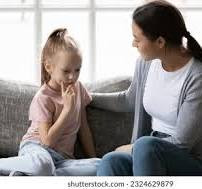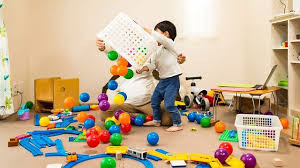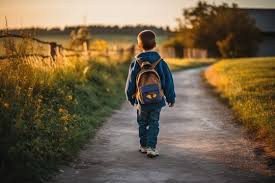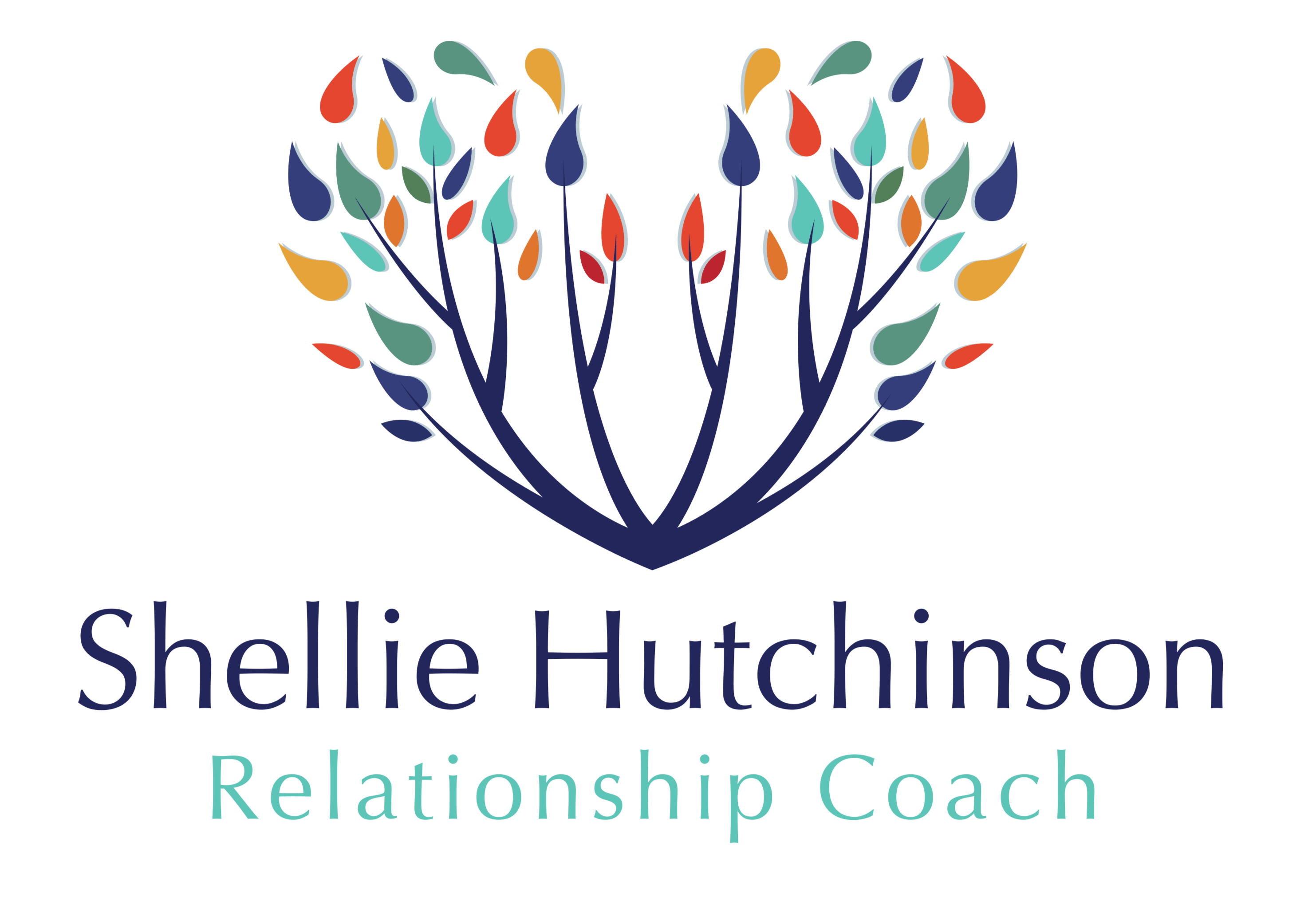
to
Where I grew up, kindergarten was half-day and I attended the afternoon session. I walked to school with a friend most of the time, but sometimes I walked alone. I clearly remember one of those alone days. It was warm, so it was probably towards the end of the school year. The neighborhood was quiet and peaceful. When I got to the school-yard, however, my route, which required walking through a large field of grass, was disrupted. Multiple sprinklers were on, watering the grass with large, overlapping arcs, while making that all-too-familiar tch-tch-tch sound. I knew I wasn't going to get to the other side of those sprinklers without getting soaked.
I considered my options. Here was what my little six-year-old brain came up with: I could run through the sprinklers and get to school dripping wet, but on time. Or I could backtrack and take the long way to school, through the otherside of the neighborhood. It would get me to class dry, but I would be late. I choose the latter. When my teacher asked me why I was late, I simply told her that the sprinklers were on in the field and I had to take the long way to school. She said she understood and that was that.
Not to toot my own horn, but I really like my six-year-old self. She was confident, pragmatic, and competent. Not once did she consider going home to ask Mom for help or a ride to school. She didn't panic. She wasn't stressed or overwhelmed. She just considered the situation, as well as the solutions, chose one and moved on.
When considering my childhood, this is probably the best example I can provide that illustrates, in a fair and honest way, what being a Gen X kid was like. Yes, we roamed the neighborhood until dark, engaged in play that, these days, many consider too risky, and we were often home alone, but we were highly capable for our age.
In the world of parenting, hindsight often shapes current practices. As modern parents, we frequently analyze the upbringing styles of previous generations to craft what we believe to be better environments for our children. One such critique has been leveled at the Generation X experience—those of us who grew up in the 1970s and 1980s. Often labeled as "latchkey kids," we enjoyed significant physical independence, which has often been misconstrued as a sign of neglect. This has spurred a cultural shift towards over-parenting that has lead to over-scheduled lives and little free time for today's children. So, as we critique past generations, it's crucial we understand the nuanced realities of past and present childhoods and distinguish between different types of childhood independence.
It's tempting to label the free-range approach of the 70's and 80's as neglectful, unsafe, or unwise. For many modern-day parents, doing so supports their over-involved, anxious approach. In actuality, that free-range approach cultivated development in the best ways. We know that childhood independence and free-play foster problem-solving skills, social skills, resilience, and self-reliance, to name a few. Nevertheless, despite all of this good, there was something missing for many Gen X kids - parental emotional availability.
The parents of Generation X were characterized by a 'silent strength' that prioritized survival and practicality over emotional expression. Societal norms at the time valued stoicism and self-reliance, leading to a legacy of emotional unavailability. Emotional availability wasn't a concern parents in the 70's and 80's were highly conscious of; instead, survival and providing materially were paramount.
In most cases, this was not due to neglect, but rather as a consequence of their parents’ upbringing. Keep in mind, members of this previous generation were raised by parents who lived through significant societal upheaval—marked by the Great Depression and two World Wars. These significant and extremely challenging events shaped their worldviews, making them practical, but emotionally reserved parents. Additionally, economic challenges, such as the oil crises and recessions throughout the 1970s, necessitated a significant increase in dual-income households, without a reliable day-care structure for parents to rely on.
So how have modern-day parents compensated for the lack of parental emotional availability in their own childhoods? More often than not, parents today have swung the pendulum too far in the opposite direction. And by doing so, these parents aren't any more emotionally available to their own kids, than their parents were to them. Over-scheduling a child's life and utilizing overprotective scrutiny and micromanaging every aspect of a child's emotional landscape is not parental emotional availability. Being emotionally available doesn't mean shielding a child from every possible adversity. It's not about removing every hurdle or challenge, while calmly talking to them about emotions. Parental emotional availability is not sparing a child from life's disappointments or creating a bubble-wrapped, activity-filled world for them.
Parental emotional availability is about fostering a relational atmosphere that lets a child know that they can come to their parent for support and guidance. It is being present. responsive, and empathetic in small ways throughout the day. It's about taking a moment to stop what you're doing, make eye contact with your child, and just listen and guide. It's not about ensuring you are present for every emotional moment, while talking deeply about emotions. It's about creating a safe haven in which your kid feels comfortable coming to you with their worries and concerns. It's about allowing your child to experience challenges and hardship. This is what fosters emotional independence in children.
For parents today, striking a balance between physical independence and emotional independence can be challenging. Parents experience immense pressure to keep up with everyone else. In the long run, the childhood rate-race is harming our children. But striking this important balance is possible. It's about slowing down and doing less. It's about encouraging free-play and independence without much adult supervision. It's about giving children the space to explore while being a reliable source of comfort and guidance. It's about encouraging dialogue and emotional expression, while letting our kids struggle and work through their hardships.
As we navigate the intricacies of modern parenting, let's appreciate the lessons from past generations without mislabeling their methods. We can learn so much from the free-range upbringing of Generation X, while also recognizing that today's parenting landscape permits new approaches. There are promising trends regarding parents' emotional engagement these days. As awareness grows about mental health and emotional well-being, many parents today actively seek to build healthy emotional connections with their children. We can, and we should, combine emotional availability with independence, crafting a nurturing yet empowering environment for our children. This delicate equilibrium supports their development in the most effective way, thus preparing them for the journey of adulthood.
**References:**
- Autor, D. H., & Dorn, D. (2013). *The Growth of Low Skill Service Jobs and the Polarization of the US Labor Market*. American Economic Review.
- Brussoni, M., Olsen, L. L., Pike, I., & Sleet, D. A. (2015). *Risky play and children's safety: Balancing priorities for optimal child development*. International Journal of Environmental Research and Public Health.
- Fraley, R. C., Roisman, G. I., & Haltigan, J. D. (2013). *The legacy of early experiences in development: Formalizing alternative models of how early experiences are carried forward over time*. Child Development.

In the bustling world of parenting, maintaining a tranquil atmosphere is no small feat. With daily life often filled with a flurry of activity, emotional outbursts and challenging behaviors are bound to happen, both from children and parents. It's during these instances that the significance of timeouts and understanding the power of pausing comes into play. Timeouts, when used appropriately, offer windows of calm to foster emotional development and learning, while also enriching the relational health between child and parent. Here are some benefits of implementing emotional pauses or timeouts:
1. Emotional Regulation: Timeouts provide a structured environment for kids and teenagers to learn to manage their emotions. When feeling overwhelmed by frustration or anger, a brief pause can help your child regain composure and reflect on their feelings. Over time, this practice reinforces self-regulation skills that are crucial for emotional development.
2. Reflective Learning: A well-timed pause offers children a chance to think about their actions and the subsequent consequences. This reflection time is critical in helping them understand right from wrong, thereby nurturing their moral development.
3. Parental Calmness: Timeouts aren’t just beneficial for children. They also offer parents a moment to gather their thoughts and approach the situation calmly and with a clear head. This ensures that parents respond thoughtfully rather than react impulsively, fostering a more harmonious relationship.
What Does An Effective Timeout Look Like?
1. Consistency is Key: Use timeouts consistently as a response to specific behaviors, such as tantrums or unkindness during peer-to-peer play. This predictability helps children understand the boundaries and reinforces the learning process.
2. Provide a Warning; Saying something like, "Please stop throwing the blocks or you'll need to take a break." allows the child time to adjust their behavior or pivot if a pause is needed. Utilizing a timeout in an effort to redirect behavior doesn't need to be long. Thirty seconds to one minute for young children is usually effective.
3. Create a Calm Space: Designate a quiet and safe timeout area. This should not feel like a punishment zone but rather a peaceful place where your child can calm down and reflect.
4. Check-in: Utilizing empathy and checking in with your child while they're in a pause, will reinforce feelings of security and love in your child.
5. Reconnect Post-Timeout: Once the timeout is over, take the opportunity to discuss the behavior calmly. Ask your child how they felt and explain the reason behind the timeout. This helps in reaffirming lessons and strengthens your emotional bond.
What Makes a Timeout or Pause Ineffective?
1. Angry Pauses: Implementing a timeout out of anger can have a detrimental effect. It’s important to differentiate a calm pause from a punitive one. If a timeout is given in the heat of the moment, it may convey rejection rather than guidance, causing the child to feel alienated and shamed.
2. Isolation: Timeouts should never be about isolating the child. Instead, they should be considered a pause for calming down, redirecting behavior, or reflection (reflection will depend on the child's age and developmental level). Ensure that the timeout spot is within a comfortable and close proximity to avoid feelings of abandonment. When redirecting behavior in young children, it can be helpful to remove the child for a moment and discuss the situation with them in a simple, age-appropriate way.
3. Negative Labels and Comments: Avoid using phrases like "bad boy" or "bad girl" while giving a timeout. This can damage your child’s self-esteem. Focus on addressing the behavior, not labeling the child.
4. Don't Prolong the Pause or Give It a Specific Time Limit: The pause is about emotional regulation and/or behavioral redirection, as well as ensuring the child has the time and space for development to do its job.
Angry pauses, or timeouts used as arbitrary punishment, can have lasting negative effects on a child's emotional well-being and the overall dynamics between parent and child. When timeouts are given in anger, they often become punitive rather than educational and developmental. This can make the child feel shamed and misunderstood, potentially leading to increased behavioral issues and strained relationships. Furthermore, it may teach children to associate conflict resolution with avoidance rather than understanding and communication.
On the other hand, implementing timeouts thoughtfully can transform big emotional moments into powerful tools for emotional growth and relational harmony. They serve as essential pauses that allow children to process emotions and allow parents to approach situations with calmness and clarity. By applying the principles of consistent, calm, and compassionate timeouts, you foster a nurturing environment where emotional development thrives, and the parent-child bond is strengthened. Remember, every emotional moment is an opportunity to connect, guide, and grow together.
I'd love to hear your experiences and thoughts on using timeouts. Share your stories in the comments below!

Years ago, our move to Florida brought with it a few adjustments, including the way our kids played. We left behind a classic 'playborhood', where kids would gather outside every day and ride bikes and scooters, play tag and sports, without much adult supervision. When we started planning our move, it didn't cross our minds that not all neighborhoods were 'playborhoods''. We did our research and learned that there were numerous kids in the area, and a lot of the yards were home to play gyms or trampolines. The neighborhood we choose even had its own playground and tennis and basketball courts.
Once there, however, we noticed the neighborhood was consistently desolate of kids playing outside. I started reaching out to parents and learned that peer play-time was almost always scheduled and supervised by parents. This is how I learned the term 'play-date'. And finding time to play with these very busy and very scheduled kids wasn't easy. So our boys played a lot with each other. We encouraged them to play outside and designated an area of the house for their play. This play space was often scattered with legos, lightsabers, and hot wheels. But it was their space and play they did. Once a family friend was over for dinner. After dinner, the boys left to play and the three of us sat outside talking. At one point our friend interrupted the conversation and stated that he just needed to make sure "this was normal". He was referring to the loud ruckus the boys were making. My husband and I hadn't even noticed it. We assured him it was very normal.
As parents, the sight of toys scattered across the room and the constant background noise of shrieks, giggles, stomping and loud voices, can be overwhelming. It’s easy to feel stressed when your home transforms into what appears to be a disorderly jungle gym. However, amid this mess lies the profoundly valuable chaos of play. When parents attempt to remove the chaos of play from their lives, they are inadvertently disrupting the development of their child. Children who lack regular free-play are at risk for increased worry and anxiety and are often less tolerant of the world and it's challenges. Not enough physical activity can disrupt sleep patterns and focus as well.
Here's how your kids benefit from the chaos of play:
Play is a fundamental part of childhood learning. Through imaginative play, children develop critical thinking and problem-solving skills. Whether they are building complex structures with blocks or engaging in make-believe scenarios, play stimulates brain development and helps children learn to plan, communicate, and execute their ideas.
Playing with others teaches kids how to interact socially. They learn the importance of sharing, negotiation, and empathy. These interactions help them build the foundation for strong relationships in the future. Those pretend tea parties and collaborative LEGO castle constructions are more than just passing the time—they're essential social skill-building exercises.
Play allows children to express their feelings and work through emotions in a safe environment. Dramatic play scenarios can help kids process what they experience in real life, including fears and anxieties. This emotional rehearsal builds resilience and emotional intelligence for the real challenges of life.
From climbing playground structures to running around the yard, physical play is crucial to a child's health. It enhances motor skills, coordination, and overall physical fitness. In a world where screen time is steadily increasing, encouraging active play is more important than ever.
Unstructured playtime fosters creativity. Give a child a cardboard box, and suddenly it becomes a spaceship, a fort, or a submarine. This ability to think outside the box (literally and figuratively) is a vital skill that will benefit children in all areas of life.
Accepting and even celebrating the chaos of play can change your perspective as a parent. Here are some tips for managing the stress that often accompanies a playful home. Embrace the mess by:
Establishing specific areas in your home where play is encouraged. This can help contain the mess and make clean-up more manageable. A well-organized play zone can still be full of activity without overtaking your entire living space.
While it's important to allow unstructured playtime, setting limits on when and where certain types of play can happen can help maintain a sense of order. Establishing routines for tidying up can also teach your child responsibility and the importance of cooperation.
Instead of focusing on the disorder, try to see the creativity and learning happening within the chaos. Remind yourself that this phase of life is temporary, and the day will come when the toys are gone, and the house is quiet.
Here's the takeaway: The chaos of childhood play may seem like a storm in your living room, but it is also a whirlwind of learning, growth, and joy. By recognizing the immense value of play, as a parent you can cultivate an environment that nurtures your child's development while maintaining your own peace of mind. Embrace the chaos, and remember that the world of play is the work of childhood.

As parents we often think of ourselves as our child's teacher. We constantly consider all that the child must 'learn' to become a successful, emotionally resilient adult, and we put immense pressure on ourselves to ensure that the learning happens. But what if we started thinking of ourselves not only as teachers, but also as guides? Consider it. A teacher's role is to teach someone all there is to know about a specific topic or task. Whether that's tying a shoe, doing a math problem, or driving a car, certain steps are required and are taught in a specific order. You can't learn how to reverse a car, for instance, until you know how to turn it on. Teaching then, is an important and necessary part of the parenting role. It is primarily used to assist kids with physical and cognitive development. When it comes to social and emotional development, the teaching model doesn't work as well. That's because helping our kids regulate emotions, make friends, problem solve social interactions, or make good choices, does not always involve a specific set of rules and steps that, when done correctly, works every time. In social and emotional development, every situation is different and is influenced by a number of external factors, as well as personality and temperament. The great American educator and philosopher, John Dewey, emphasized that a child's own instincts and strengths provide the necessary material for learning and that learning is a process of living, rather than a preparation for future living. This is where our role as a guide comes in.
I love to hike the beautiful trails in central Utah, where the fiery red rock formations stand tall against an almost always blue sky. Surrounded by this grandeur, I am always brought to sense of awe and peace. Most of these trails are marked very well, but a wise hiker would know to never take a back- country or unmarked trail without an experienced hiker by your side - a guide. The guide isn't there to tell you what to do every step of the way, standing behind you and pushing you along. The guide is there to lead the way, occasionally taking a look back to ensure you're keeping up, watching your step, and drinking enough water. As a parent guide, you are doing the same. Because here's an important fact about childhood development: kids develop socially and emotionally more by watching their parents behaviors and actions, rather than by listening to their words and instructions. Social and emotional development is designed to happen. As parents, we don't need to make it happen, we just need to guide our kids through it.
So the next time your toddler, or teenager for that matter, is having a tantrum, remember they are learning how to regulate their emotions through this experience and by watching you. A child, especially a younger one, isn't able to fully separate their emotions from yours. If your child is annoyed, hungry, or tired, as far as they know, you are too. When you stay calm, even when you're at your boiling point on the inside, you're guiding them through that difficult moment. On a developmental level they are learning, "Oh, this is what I do when I'm really upset or uncomfortable". Of course there are times when we reach our breaking point as parents and don't model great emotional regulation for our kids. They learn a lot from this too. They learn that we all make mistakes, they learn how to correct a mistake and apologize, and they learn to move on, because you are guiding them through. These moments are going to look and feel different every time, but with an effective parental perspective, the trail forward is clear, and much easier to navigate.








